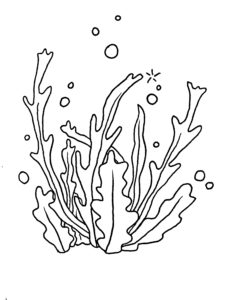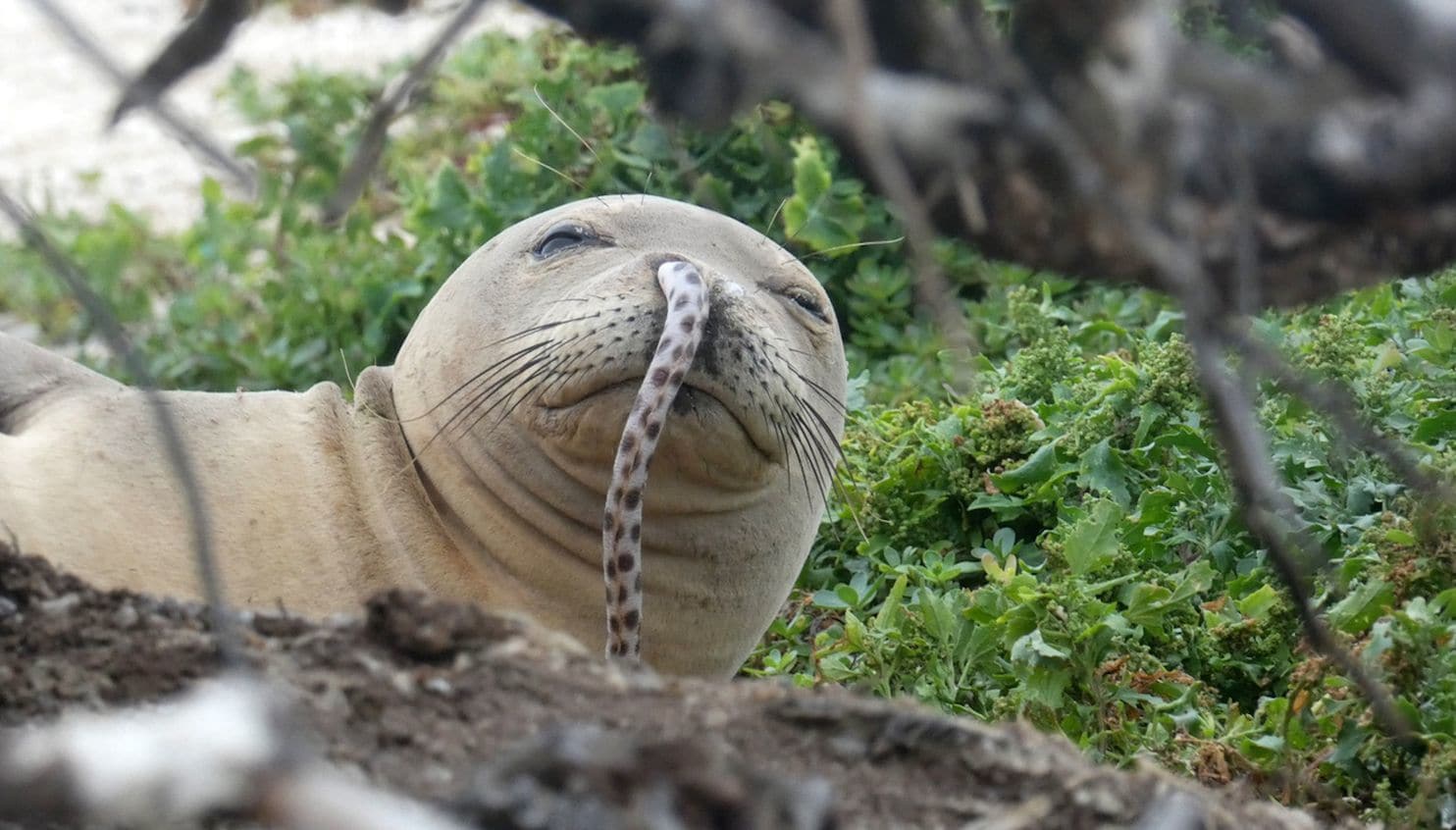
Photo courtesy of Brittany Dolan
When Brittany Dolan became a field biologist, wrestling a seal on the beach to remove a two-and-a-half foot dead eel from its nostril was not what she had in mind.
Yet in early December, per the conservationist newspaper The Dodo, that’s exactly what she found herself doing.
Curiously enough, dead eels stuck in the nostrils of a Hawaiian monk seal are a rapidly growing trend.
Scientists from the National Oceanic and Atmospheric Administration (NOAA) have now observed this occurrence multiple times since 2016. Talk about a “slippery situation,” NOAA joked in a press release on December 3, 2018. In 40 years of monitoring the population of Hawaiian monk seals, an endangered species that mainly lives on atolls northwest of Hawaii, they had never seen the phenomenon before this recent epidemic.
In each case, the seal has been fine. The eels, which cannot survive outside of water, have not been so lucky.
As if that wasn’t odd enough, every seal found with an eel up its nose has been a juvenile.
Still, the eels pose a danger to the seals. With an eel up its nose, a monk seal cannot dive safely without water owing into its lungs. Since it feeds on marine animals like octopi, sh, and eels, the seal faces a choice between starvation and drowning.
“You kind of want to go smack the seals… ‘Dude, don’t you know that you’re important, and that there aren’t that many of you? You can’t go screwing it up,’” said Gillian Ashenfelter, Lick-Wilmerding Marine Ecology teacher.
***
NOAA biologists have three leading theories about why this may be happening. (Unfortunately, no teenage Hawaiian monk seals responded to requests for comment.)
1. The eels are trying to escape from being eaten and are swimming in the worst direction possible.

Illustration by Billy Lawson
Imagine that you’re an eel, and out of nowhere, a seal sticks its snout into the coral reef that you call home, determined to eat you for lunch. “Not today!” you shout. (Ignore, for a moment, that eels are not actually capable of human speech.) You burst out of your crevice to freedom, swimming for your life — only to find yourself in a wet, sticky place: the inside of a seal’s nostril.
But why is this only happening just now? Some at NOAA wonder whether younger seals have less experience hunting than their elders did at the same age, so they are opening themselves up to mistakes. In other words, kids these days just can’t hunt for eels the way their parents used to.
2. The seals are successfully eating the eels, and then snarfing them.

Illustration by Billy Lawson
Ever laughed so hard while you were drinking water that the water came out through your nose? For the uninitiated, that’s called snarfing, and it’s one possibility here. The young seals may have successfully eaten the eels, only to somehow get them from their throat to their nostril. However, it is less likely that the seals actually snarfed the eels than that they regurgitated them.
3. This is just a seal version of the Tide Pod Challenge.

Illustration by Billy Lawson
It’s foolish to assume that only human teenagers are capable of enormous feats of stupidity. The director of NOAA’s Hawaiian monk seal program has speculated that juvenile seals may simply be trying to impress their friends or seem cool with the latest fad. “Here, hold my fermented seaweed drink while I snort this eel,” an anxious seal might say as they desperately try to fit in.
***
Of course, it’s more dangerous for a few Hawaiian monk seals to act stupidly than it is for a few humans. There are seven billion of us, and only 1,400 of them. Each monk seal death brings the species closer to extinction.
As Calum MacDermid ‘20, a student in the Marine Ecology class, puts it, the deaths might “seal their fate.”
This situation poses a moral dilemma. “Historically, the animals that were stupid enough to snort eels would have died. Now, you can’t let them die,” Ashenfelter said.
“Behaviors in nature have been seen as having a purpose, as being naturally advantageous. That isn’t always true,” Anna de Hostos Barth ‘19, another Marine Ecology student, said. “I’m really curious to see where the research goes, if this is beneficial to the seals.”
NOAA biologists work hard to protect Hawaiian monk seals from threats to their population, from predators, human predation and human error. Fishermen reported accidentally catching a monk seal in 2017. In a recent human initiative to protect the seals, humans moved 28 pups across an atoll to keep them safe from sharks.
To what extent, though, should the scientists go to protect monk seals from themselves? One could view scientists removing eels as part of a mutually beneficial relationship between seals and humans. Then again, one could also see it as interfering with natural selection itself.
Anyways, it’s hard not to smile when reading about seals who just really need to blow their noses. “Nature is this wacky and amazing place,” de Hostos Barth said. “Biodiversity is important for fun as well as ecosystem health. There’s an inherent value to knowing that animals are out there doing their thing,” Ashenfelter agreed.
After a moment, Ashenfelter added, “Teenagers are goofy, regardless of the species… they don’t know what they’re up to.”

Illustration by Billy Lawson






